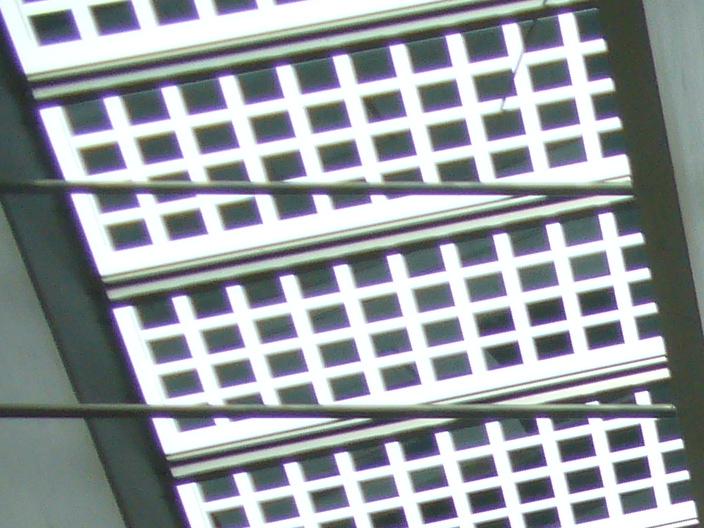SjoerdRoorda
⚠ (:searchbox size=13 label=Go value=Search focus=true:)
Research
Filed in: Roorda.Research · Modified on : Thu, 27 Dec 12
I study the modification and analysis of materials by MeV energy ion beams, to better understand the structure of matter and for fun. The following subjects are current, or keep coming back ...
Structure of amorphous semiconductors

Some atoms and neighbors in amorphous silicon
Understanding the atomic structure of amorphous semiconductors, especially amorphous silicon, is important for basic science (understanding the role of disorder) and for pragmatic reasons (it's the stuff that solar cells and laser printers are made of). I use high-energy X-ray diffraction to provide the average, projected atomic structure information that can then be used to test computer models of the atomic structure of these materials. From these data and the models, the distribution of bond lengths and tetrahedral and dihedral bond angles (depicted in the figure) can be deduced, as well as the form of the interatomic potential. Recent outstanding issues are: Can we distinguish between second and third neighbors in amorphous Si ? Can we conclusively rule out so-called paracrystalline models as good descriptions of these materials ? What is the origin of the very weak scattering feature at 1/2 the angle of the first sharp diffraction peak ? Is the scattering at very small angles indicative of hyperuniformity ? Are well-defined defects such as single vacancies stable in these materials or do they relax into nondescript areas of increased disorder ?
Relevant publications include papers on atomic structure in amorphous silicon, amorphous germanium, a comment on the validity of the paracrystalline model, and observed anisotropy in amorphous silicon. See also the full publications list.
Swift heavy ions in solids


Electron microscopy of deformed nanoparticle
The irradiation of materials with so-called swift heavy ions (heavier than He, an MeV or more per nucleon) leads to interesting, sometimes counter-intuitive effects that need to be understood for a basic understanding of the behavior of matter far from equilibrium and has consequences for ion track engineering and nuclear waste storage. An example is shown in the figure to the right, which is an transmission electron microscopy image of a small gold particle embedded in a sphere of silica, after irradiation with 30 MeV Se ions along the direction indicated by the arrow (and 45 degrees out of the plane of the image). The outline of the original gold and silica particle are indicated by dotted circles. The silica has deformed as if hammered by the ions (i.e., flattened along the beam directions and widened across), but the gold nanoparticle has turned into a nano-rod oriented perpendicularly to the plane into which the silica has flattened. Such oriented nanorods have unique optical properties related to plasmon surface resonances.
Many questions are current in this field. Does the ion track really melt ? Does the ion momentum play a role at all ? What determines the minimum diameter of the nanorods ? How many ions are needed to achieve a measurable deformation ? How can we take advantage of the peculiar plasmon resonances in these nanorods ? Can silicon be made amorphous with swift heavy ions and what are its properties ?
Relevant publications include papers on lateral mass transport, deformation of core-shell particles, and non-linear optical properties of nanorods. See also the full publications list.
Nanostructured organic photovoltaics

Rotterdam central station roof with solar cells
The widespread and daily use of fossil fuels leads to global warming and nuclear energy gives radioactive waste (and many, the creeps). We need to develop affordable sources of renewable energy. In the past, I have contributed to making industrially produced polycrystalline solar cells more efficient. Presently, a promising development is the use of nano-structures to improve the efficiency of plastic solar cells. In principle, organic (polymer) photovoltaic cells can be made much cheaper than inorganic solar cells, and with a faster energy earn-back time. However, it is a challenge to reach high efficiencies because photo-generated excitons and carriers tend to de-excite or recombine before they are collected. An improvement over the single, planar junction cell is the so-called bulk hetero-junction cell. We plan to improve on the latter, by imposing a nano-structure on a single junction using a template made from nano-porous alumina (or similar material).


